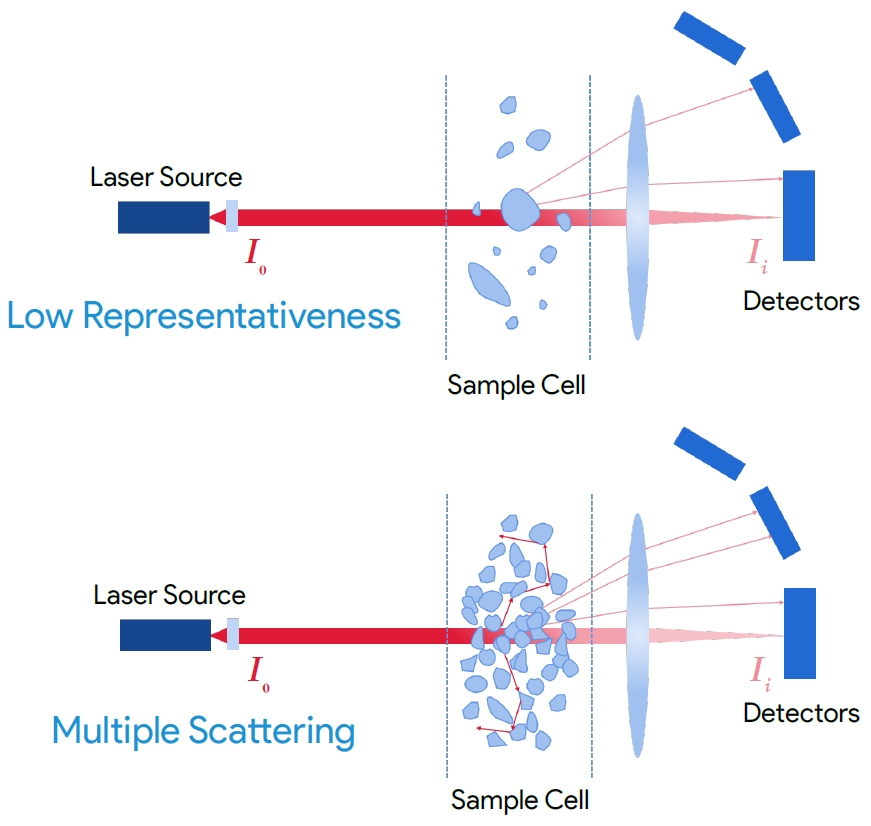How to choose a proper obscuration range?
2022-12-07WIKI
In general, laser diffraction particle size analysis is carried out when the obscuration of the sample in the flow stream is between 10 and 15%. A proper working obscuration lies between having too few particles thus affecting statistical representativeness, and too many particles leading to multiple scattering and hence undersizing of the particle results. In other words, if the obscuration is set between 10 and 15%, multiple scattering can be avoided, and sampling representativeness can be guaranteed.
Small particles have a more significant impact on the obscuration. For samples of the same volume, samples with smaller particle size distributions have more particles, leading to higher obscurations and, therefore, the potential for multiple scattering if the obscuration is higher than the upper recommended obscuration limit. According to experience, the proper obscurations for large particles are higher than those for smaller particles during measurement.





